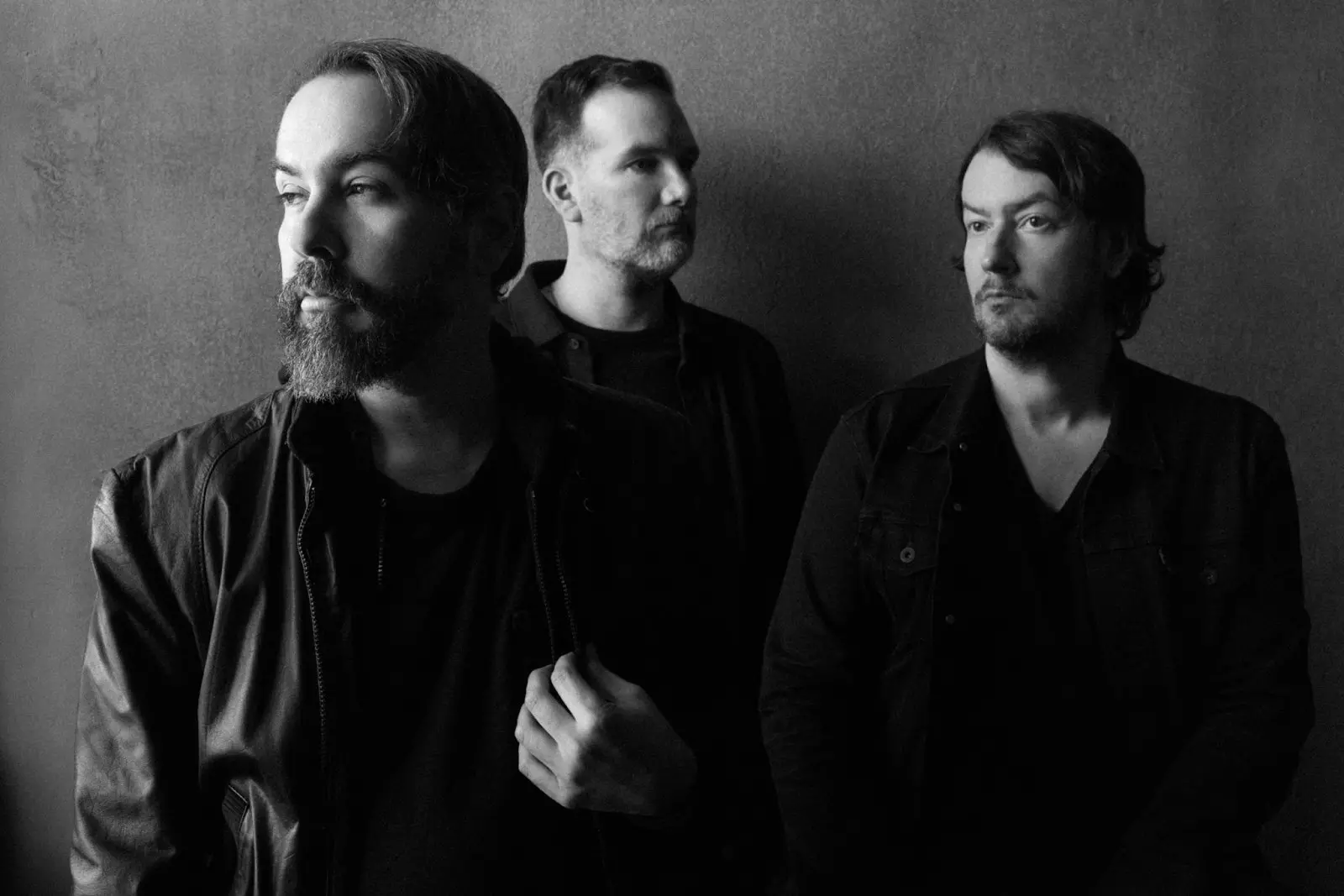Photo: Garrett Bruce

interview
Lil Tecca Is Making "Growner" Music On New Album 'Tec'
When live music returned, Lil Tecca experienced a creative flourishing. His new album, 'TEC,' consolidates and inventories everything that makes the MC tick.
Lil Tecca may be barely old enough to drink, but he has reams of experience under his belt. He's a more advanced rapper than he was even a year ago: he doesn't risk life and limb onstage, like when he leapt offstage without shoes and almost broke his feet.
At 21, he's still hurtling forward — personally and creatively. "When I was 16, I was put in a little bit of a box, in a way," he tells GRAMMY.com. "Like a Kidz Bop, Disney World kind of thing."
But his first two full-length projects, 2020's Virgo World and 2021's We Love You Tecca 2, put childish things to bed — and now, he's out with his most mature, cohesive album to date. In his word, it's "growner" than any of its predecessors.
Featuring guest appearances from Kodak Black ("Hvn on Earth") and Ken Carson ("Fell in Love"), TEC breezes through everything that makes Tecca, Tecca. The former single is a perfect example; he can effortlessly braid with a top-shelf MC while maintaining his individual voice and vibe.
"You're definitely going to feel a various amount of emotions throughout this project. There's hype songs; there's cocky songs; there's flexing; there's sad; there's insecure. There are songs where I'm trying to manifest my future."
Read on for an interview with Lil Tecca about his conception behind TEC; growing up listening to, then working with Kodak Black; and not getting in his own way creatively.
This interview has been edited for clarity.
Tell me about your creative synergy with Kodak Black.
I think with the song "Hvn on Earth," we really just found a common place where we both fit in creatively. We didn't make [the song] at the same time. When I sent it to him, he told me he really liked the song.
When I first thought of him on the song, I was like, OK, maybe this is gonna be a cool record. I didn't really ever think of the creative synergy for real. I just thought of how good he would sound on a beat.
What is it about the qualities of his voice, or his artistry, that made him perfect?
Growing up listening to Kodak Black, I always noticed the bounce to his beats — that Florida-ish bounce.
I made the beat to this one. Not that it reminded me of it, but I kind of felt like his flow complemented it.
Since you grew up listening to Kodak Black, getting to collaborate with him must have been a huge moment.
Yeah, definitely. I definitely grew up listening to Kodak, around 15, 14. He was one of the first rappers [I listened to].
Creatively what was the seed that grew into TEC?
I was just working on my album; I didn't even have a name for it yet. It was a little bit after my 2022 tour. I was just so ready to drop something for this, around this time.
Honestly, creatively, I'm always working. But putting this project together kind of put a battery in my back. Because I gave it a demand; it was like a must-be-done thing.
Putting together the whole album, I was very focused on incorporating all my sounds into this one sound — not leaving anything behind. Just making sure everything grows with me as I grow, and sticking to my roots, for sure.
What was it about this moment that galvanized you to get something out there? I'm sure returning to live shows — the energy of those — contributed to that.
Yeah, 100 percent. I'm always trying to drop a project every single year. Being super busy in 2022 and not being able to drop one, I was like, I really wish I got to drop a project.
So, coming around 2023, I didn't give myself no choice.
For those who haven't seen you live before, what can they expect?
My shows are very, very active. I feel like my setlist is very diverse. There might be a few chill songs, like [my 2022 single] "Love Me" or "Want It Bad" off my new album. A lot of slow songs that might give the fans a break.
Because when it comes to the real hitting-hard songs — loud 808s, loud bass, everything — it's mosh pits; it's very active in the crowd.
I love my setlist. It even gives me time to breathe sometimes, when I need to breathe. So, it's definitely a trip, for real. It's not like you walk into the spot and you're just jumping. You walk in, you're singing, you're jumping — just having a good time.
From a performance standpoint, who in the rap world inspires you? Regarding those two qualities — diversity and energy.
I don't really look to anyone for motivation. I would say my fans motivate me the most.
I go off their energy a lot. Not that their energy is everything, because if I see people not jumping, I'm still going to rock out. But if I see them do going crazy, that's just another battery in the back for me to just go crazy.
But I definitely look back at my own film. I definitely be checking out Rolling Loud, seeing how the people who perform, like the headliners, do. But I'm really just learning from my own mistakes, for real.
Such as?
I've made so many mistakes to perform the way I do now.
I've had to jump off the stage with no shoes on and almost break my feet. I realized that you can't really just be jumping off the stage with no shoes like that. To see fans run up on me on stage, and my bodyguard tackle them right in front of me; I'm in the middle of singing my last song of the set.
Especially coming into this game, me and my whole team — we're our own OGs. We learned this the same way everyone else learned it; we had to make our own mistakes for all the people we get under our wing.
To tell them, "Hey, listen, you shouldn't do that. We had to do that; we had to get the consequences of doing that."
Every artist, every MC, has a different dynamic with their fans. What's yours?
I feel like my fans are just like me. And even if they're not just like me, they think they just like me.
I feel like we relate. And that's, like, 50 — if not 60 — percent of the reason why they liked me. The music I make is just the soundtrack to how we relate to each other, and what we're both going through.
When I think of my fans, I definitely think of myself, and all the people that look up to me. When I win, they win. So, it's that window of seeing that it's possible: Look at this dude; he just like me. He going crazy. He doing what he wants to do. I could do what I want to do.
**Would you like to shout out any accompanists and producers on TEC?**
Taz Taylor and Rio Leyva. Shout out to BNYX too, but mainly, Taz Taylor and Rio Leyva.
Rio Leyva is the brain. He's the person in the background who's on the computer all day, figuring out all the lab stuff. Everyone else is also putting in work all the time — Census, Nash, Noah. All the guys at Internet Money.
They're all just working in and out, jus trying to figure out new sounds — new ways we could push the genre, push the sound we created, all that.
Taz Taylor was my partner in crime throughout this whole project, creatively-wise. I trust that man's ear — sometimes, when I don't trust my ear. That's one of them guys right there. If he wasn't part of this process, this album probably would have dropped in 2025.
Why's that? Do you tend to get a little self-doubting? Did he help nudge you up the hill?
I never get self-doubting. If anything, I'm overly confident. Like, I think anything I've touched turned to gold.
Because the way I see life is, like, if you weren't born, there's so many things that wouldn't exist. That's how I see my life, so I never take credit away from it. I look at it as great.
Sometimes, you need those people around you — to be like, "Hey, listen: you might think this is great, but this is the one right here."
And sometimes, you've got to go with your gut, like, "Hey listen: I know what you're thinking about it, but this is how I think about it." You've got to have a little balance around you.
*Lil Tecca. Photo: Cones*
And can you talk about the guests on TEC, other than Kodak?
Yeah, Ken Carson on "Fell in Love." He's been one of my friends for years now. So, to have that song on a project — that's really just another song that one of my friends and I made.
It really has no backstory. We just went in the studio, and one day, cooked it up.
What was it about "Fell in Love" that made the people need to hear it.
I feel like every song we make is good. But sometimes, we be making songs where it's like, OK, this one has my sound really efficiently. Because we make music for ourselves at the end of the day, too.
How would you describe the various moods contained on TEC?
Everything's on there. Especially if you're paying attention to the sonics, and the overall mood of the songs, you're definitely going to feel that I was going through a bunch of stuff during this process.
Perhaps that's why it's called TEC. It seems to be a consolidation of all your different sides.
Yes, literally that. I'm condensed into: Here it is. I'm not speaking around it.
And especially, my friends call me Tec in real life. Nobody calls me Tecca. Well, maybe someone will walk up to me on the street and call me Tecca. I never hear my government name, ever. So, that might make it a little more personal — to just call it TEC.
It seems like you've never self-inventorized on record like this.
When you just practice and care about the craft, you get better over time. Even if I thought I was good a year ago, looking back now, I'm way better now.
I'm way better at speaking about what I'm going through and actually translating it in a way to where it's inviting people into my world, instead of just blurting information at people. Like, "Yo, I'm sad right now!" "Yo, I'm happy! I just bought a Gucci bag!"
I'm presenting it in a different way, where it's like, OK, you're spending 30 minutes with me. Let's take a trip real quick. It's not just random.
What happened in your creative life that facilitated this?
I think, over time, you just pass this threshold in whatever you do. You don't even know when you hit that little threshold. It's like you could just have a convo, convo, convo. It's just a flow now. It just becomes a part of your being that it's a natural thing. You don't even realize you're doing it. You hop in a flow state.
I'm also coming from: you do it for so long, you realize you're still here. You realize, no matter who think you're not going to be here this time, you're still here, just do what you're going to do. You don't want to look at when you're 90 years old and all your grandkids around you, you won't be thinking about no Instagram comments.
So, that's how we're going to do it for real. I really passed that threshold from just not caring, not getting in the way of the creativity or the process at all.
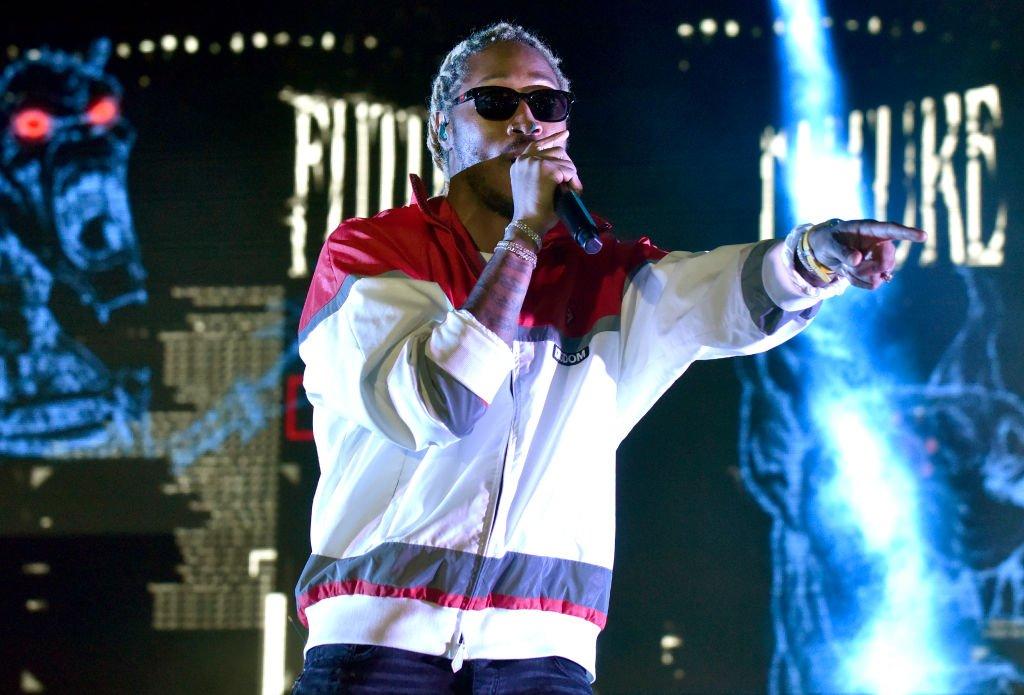
Future performs at Rolling Loud 2019 in Oakland, Calif.
Photo: Tim Mosenfelder/Getty Images
news
Rolling Loud To Expand To Portugal In July 2020: A$AP Rocky, Future And Wiz Khalifa Announced As Headliners
The three-day event, the festival's first-ever European edition, will also feature Lil Uzi Vert, Gucci Mane, Young Thug, Meek Mill, Roddy Ricch, Megan Thee Stallion, Rico Nasty and more
Rolling Loud, the leading rap festival brand in the world, has today (Feb. 5) announced its latest expansion with Rolling Loud Portugal, its first-ever edition in Europe. The three-day festival, taking place July 8-10 at Praia da Rocha Beach in Portimao, The Algarve, Portugal, is stacked with today's top artists and next-gen stars in rap, including headliners A$AP Rocky, Future and Wiz Khalifa. The all-star lineup also features rap giants like Lil Uzi Vert, Gucci Mane, Young Thug, Meek Mill and Rae Sremmurd as well as fast-rising newcomers like DaBaby, Roddy Ricch, Megan Thee Stallion, Lil Tecca and Rico Nasty, among many others.
The inaugural Rolling Loud Portugal festival will also feature performances from European artists, including AJ Tracey, Giggs, D Block Europe, M Huncho, Haiyti and Kelvyn Colt, as well as local Portuguese rappers Piruka, Yuzi, sippinpurpp, Minguito, and Lon3r Johny.
Read: Tyler, The Creator Wins Best Rap Album For 'IGOR' | 2020 GRAMMYs
Ahead of the Portugal edition, Rolling Loud will touch down in Miami, its original home, with a three-day festival, running May 8-10, featuring headliners A$AP Rocky, Coachella 2020 headliner Travis Scott and Post Malone.
Since debuting in 2015, Rolling Loud has become the premier festival destination for rap fans around the world. Founded by Matt Zingler and Tariq Cherif, the event began as a one-day festival in Miami and quickly grew as an international brand. Last October, the festival launched its debut New York City edition, which featured performances from Travis Scott, Meek Mill, Wu-Tang Clan, A$AP Rocky and Lil Uzi Vert, among others. Prior to that, in January 2019, Rolling Loud launched its inaugural event in Australia with a heavy lineup featuring Future, Lil Uzi Vert, YG, Tyga, Playboi Carti and others.
Pre-sale passes for the inaugural Rolling Loud Portugal 2020 go on sale Thursday, Feb. 6, at 8 a.m. GMT. General admission and VIP tickets go on sale Friday, Feb. 7, at 8 a.m. GMT.
To view the full lineup and to purchase tickets for Rolling Loud Portugal 2020, visit the festival's official website.
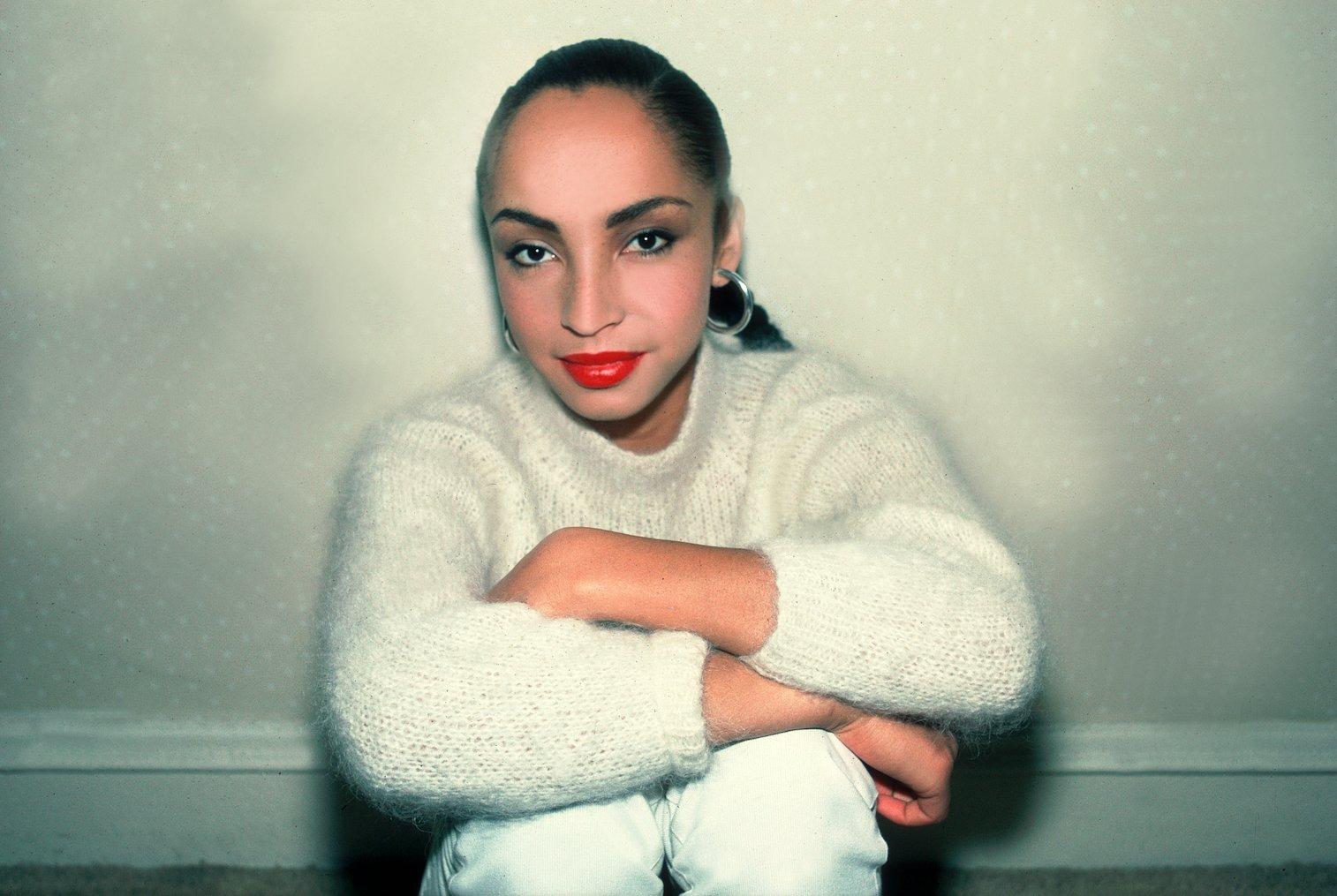
Photo: Paul Natkin/Getty Images
list
8 Ways Sade's 'Diamond Life' Album Redefined '80s Music & Influenced Culture
As Sade's masterpiece 'Diamond Life' turns 40, see how the group's debut pushed R&B forward and introduced them as beloved elusive stars.
"I only make records when I feel I have something to say," Sade Adu asserted in 2010 upon the highly anticipated release of Sade's GRAMMY-winning Soldier of Love album, which arrived after a 10-year hiatus. "I'm not interested in releasing music just for the sake of selling something. Sade is not a brand."
This lifetime of dedication toward achieving musical excellence helped Sade — vocalist Adu, bassist Paul S. Denman, keyboardist Andrew Hale, and guitarist/saxophonist Stuart Matthewman — gain prominence in the mid-80s, also garnering enormous respect from fans, critics, and peers alike. Formed in 1982, the English band is one of the few acts that can still be met with a hungry audience after disappearing from the spotlight for multiple years.
In an industry where churning out a new body of work is expected every couple of years, the four meticulous members of Sade move on their own time, putting out a mere six studio albums since 1984. Every project becomes more exquisite than the last, but it all began 40 years ago with Sade's illustrious debut album, Diamond Life. Ubiquitous hits like "Smooth Operator" and "Your Love Is King" appealed to listeners young and old — offering a unique blend of R&B, jazz, soul, funk, and pop that birthed a new sound and forced the industry to take notes from the jump.
As Sade's Diamond Life celebrates a milestone anniversary, here's a look at how the album helped push R&B forward, and why it's just as relevant today.
It Helped Set Off The "Quiet Storm" Craze
By mid-1984, Michael Jackson, was riding high off of winning the most GRAMMYs in a single night (including Album Of The Year) for his blockbuster album Thriller, Madonna celebrated her first top 10 hit with "Borderline," and Prince's Purple Rain was just days away from its theatrical release. Duran Duran, Culture Club, Billy Idol, and the Police were mainstays, while "blue-eyed soul" in particular had also hit an all-time high thanks to Hall and Oates, Wham, Simply Red, and others. What's more, many Black artists like Lionel Richie and Whitney Houston opted for more of a pop sound to appeal to broader audiences during MTV's golden era.
Diamond Life was refreshing at the time, as it fully embraced soul and R&B. The album offered a chic sophistication amid the synth-heavy pop and rock music that ruled the charts.
Singles like "Your Love Is King" and "Smooth Operator" introduced jazz elements into mainstream radio. In turn, Sade helped usher in the "quiet storm" genre — R&B music at its core, with strong undertones of jazz for an ultra-smooth sound. Sade and Diamond Life also laid some of the groundwork for neo-soul, which saw a surge in the '90s à la Lauryn Hill, Maxwell, and Erykah Badu.
It Made GRAMMY History
In the 65-year history of the GRAMMYs, a small number of Nigerian artists, including Burna Boy and Tems, have won a golden gramophone. In 1986, a then 27-year-old Sade Adu made history as the first-ever Nigerian-born artist to win a GRAMMY when she and her band was crowned Best New Artist at the 29th GRAMMYs. Still, Billy Crystal and Whoopi Goldberg had to accept the award on Sade's behalf — signaling Adu's elusive nature as she rarely attends industry events or grants interviews.
Since then, Sade has gone on to earn three more GRAMMYs, including Best Pop Vocal Album in 2001 for their fifth studio album, Lovers Rock. The win signified their staying power in the new millennium.
It Birthed The Band's Signature Song…
While Diamond Life spawned timeless hits like "Your Love Is King" and "Hang On to Your Love," "Smooth Operator" became the album's highest-charting single — and remains the most iconic song in their catalog. The seductive track about a cunning two-timer propelled the band into international stardom: "Smooth Operator" skyrocketed to No. 5 on the Billboard Hot 100 and hit No. 1 on the Adult Contemporary chart.
Even non-Sade fans can identify "Smooth Operator" in an instant, from Adu's unmistakable vocals to that now-iconic instrumental saxophone solo. As of press time, it boasts over 400 million Spotify streams alone, and has remained a set list staple across every one of Sade's tours.
…And It Houses Underrated Gems
"Smooth Operator" may be Sade's commercial classic, but deep cuts like "Frankie's First Affair," "Cherry Pie," and "I Will Be Your Friend" are fan favorites that embody the band's heart and soul.
"Frankie's First Affair" offers a surprisingly enchanting take on infidelity: "Frankie, didn't I tell you, you've got the world in the palm of your hand/ Frankie, didn't I tell you they're running at your command." And, it's impossible to resist the funky groove that carries standout track "Cherry Pie," which served as a catalyst for some of Sade's later, more dance-oriented hits, including "Never As Good As the First Time" and "Paradise." Some of Sade's most poignant statements about lost love, including "Somebody Already Broke My Heart" from 2000's Lovers Rock, can be traced back to "Cherry Pie."
Diamond Life's penultimate song, "I Will Be Your Friend," offers both solace and companionship — another recurring theme throughout Sade's music, from 1988's "Keep Looking" to 2010's "In Another Time."
It Was The Best-Selling Debut Album By A British Female Singer For More Than Two Decades
Sade has sold tens of millions of albums worldwide, but Diamond Life remains the band's most commercially successful LP with over 7 million copies sold. Most of Sade's other platinum-selling LPs, including Diamond Life's follow-up, 1985's Promise, boast sales between four and six million copies.
The 7 million feat helped Sade set the record for best-selling debut album by a British female singer. She held the title for nearly 25 years until Leona Lewis' 2008 album Spirit, which has sold over 8 million copies globally.
It Introduced Sade Adu As A Style Icon
When we first met Adu, her signature aesthetic consisted of a long, slicked-back ponytail, red lip, and gold hoops. Sade's impeccable style is front and center in early videos like "When Am I Going to Make a Living," in which she sports an all-white ensemble paired with a pale gray, ankle-length trench coat and loafers.
Adu rocked the model off-duty style long before it became a trend. Her oversized blazers, classic trousers, and head-to-toe denim looks were as effortless as they were chic and runway-ready — proving that less was more amid the decade of excess.
"It's now so acceptable to be wacky and have hair that goes in 101 directions and has several colours, and trendy, wacky clothes have become so acceptable that they're… conventional," Adu, who briefly worked as a fashion designer and model before pursuing music, told Rolling Stone in 1985. "I don't like looking outrageous. I don't want to look like everybody else."
It Shined A Light On Larger Societal Issues
While most of Diamond Life leans into love's ebbs and flows, a handful of tunes deal with financial strife coupled with a dose of optimism, as evidenced by "When Am I Going to Make a Living" and "Sally." The latter song characterizes the Salvation Army as a young charitable woman: "So put your hands together for Sally/ She's the one who cared for him/ Put your hands together for Sally/ She was there when his luck was running thin."
Meanwhile, Adu, a then-starving artist, scribbled down portions of "When Am I Going to Make a Living" on the back of her cleaning ticket. The soul-stirring "We are hungry, but we won't give in" refrain emerges as a powerful mantra in the face of adversity and still holds relevance in 2024. Similar themes appear throughout Sade's later work, including unemployment ("Feel No Pain"), unwanted pregnancy ("Tar Baby"), survival ("Jezebel"), prejudice ("Immigrant"), and injustice ("Slave Song").
Diamond Life closer "Why Can't We Live Together" is a well-done cover of Timmy Thomas' 1972 hit about the staggering Vietnam War deaths. The band wisely doesn't veer too far from the original recording, but Adu's distinctive contralto voice brings a haunting quality that's reminiscent of Billie Holiday.
It Ignited The Public's Ongoing Fascination With Sade Adu
Since 1984, Sade has only released six studio albums, and a remarkable 14 years have passed since the group's last offering, 2010's Soldier of Love. Ironically, that scarcity — both in terms of music and access to the artist — has actually added to Adu's appeal. Case in point: Sade's sold-out Soldier of Love Tour grossed over $50 million in 2011, and the band still brings in close to 14 million monthly listeners on Spotify.
Adu's striking beauty, mysterious persona, and knack for letting her music do all the talking has earned the admiration of her peers across genres and generations. Everyone from Beyoncé to Kanye West to Snoop Dogg have sung her praises. Drake even has two portrait-style tattoos of the singer on his torso. Prince reportedly described 1988's "Love Is Stronger Than Pride" as "one of the most beautiful songs ever." Metalheads Chino Moreno of the Deftones and Greg Puciato of the Dillinger Escape Plan have also cited Adu as inspiration — showing that her influence runs far and wide.
In 2022, reports circulated that Sade was recording new music at Miraval Studios in France. But upon Diamond Life's 40th anniversary, "Flower of the Universe" and "The Big Unknown" from the respective soundtracks to 2018 films A Wrinkle in Time and Widows stand as Sade's latest releases.
Whether fans get new music anytime soon remains to be seen, but the impressive repertoire of Adu, Denman, Hale, and Matthewman is one that aims to be truth-seeking and inspiring while exploring life's peaks and valleys. Diamond Life in particular holds up as one of the purest representations of the group's creative legacy, both commercially and musically.
From quadruple platinum status to resonating with several generations, Diamond Life will forever stand as a remarkable debut — one that continues to influence music in a multitude of ways.
Latest News & Exclusive Videos
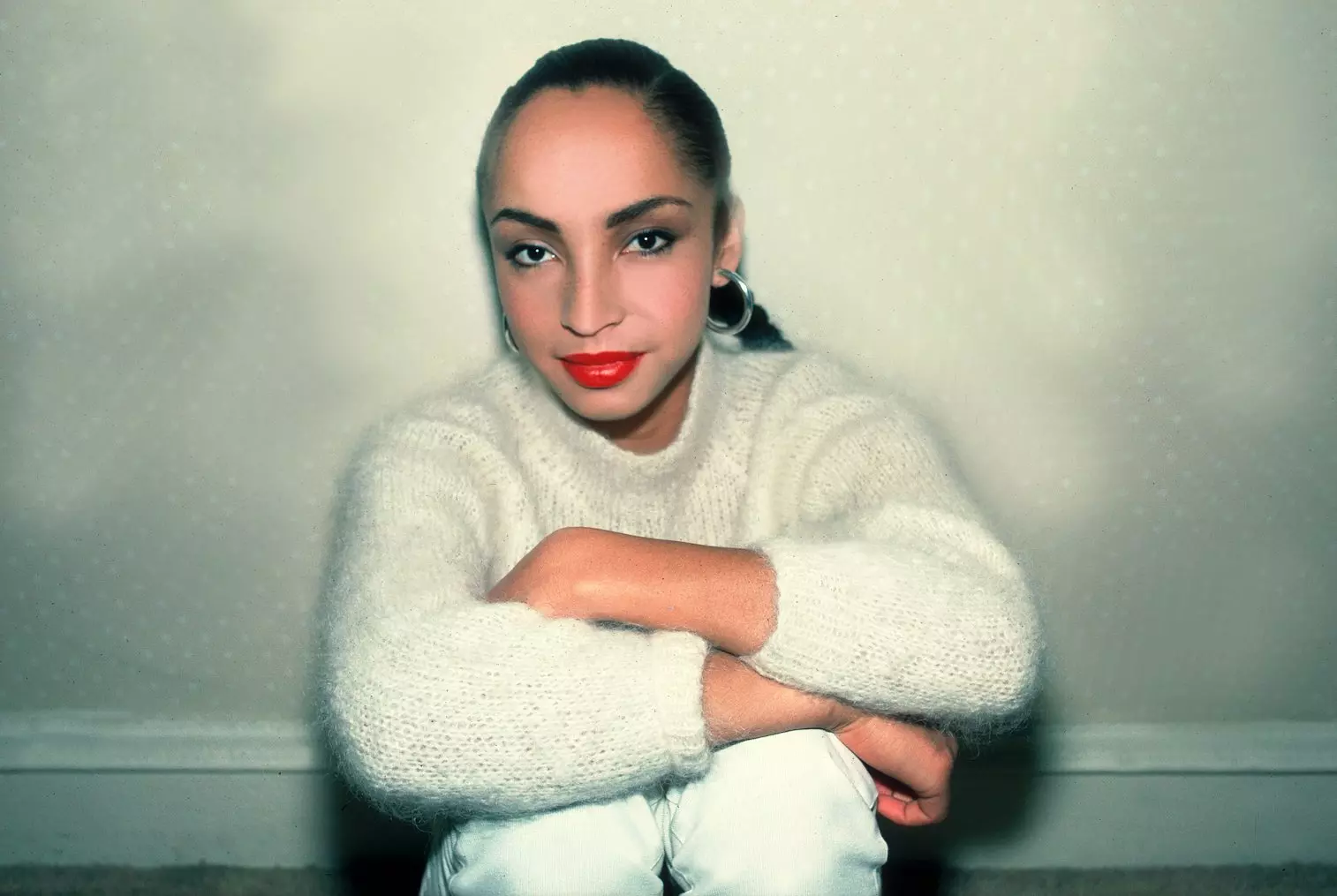
8 Ways Sade's 'Diamond Life' Album Redefined '80s Music & Influenced Culture

Katelyn Tarver's "Everyday Is A Winding Road"
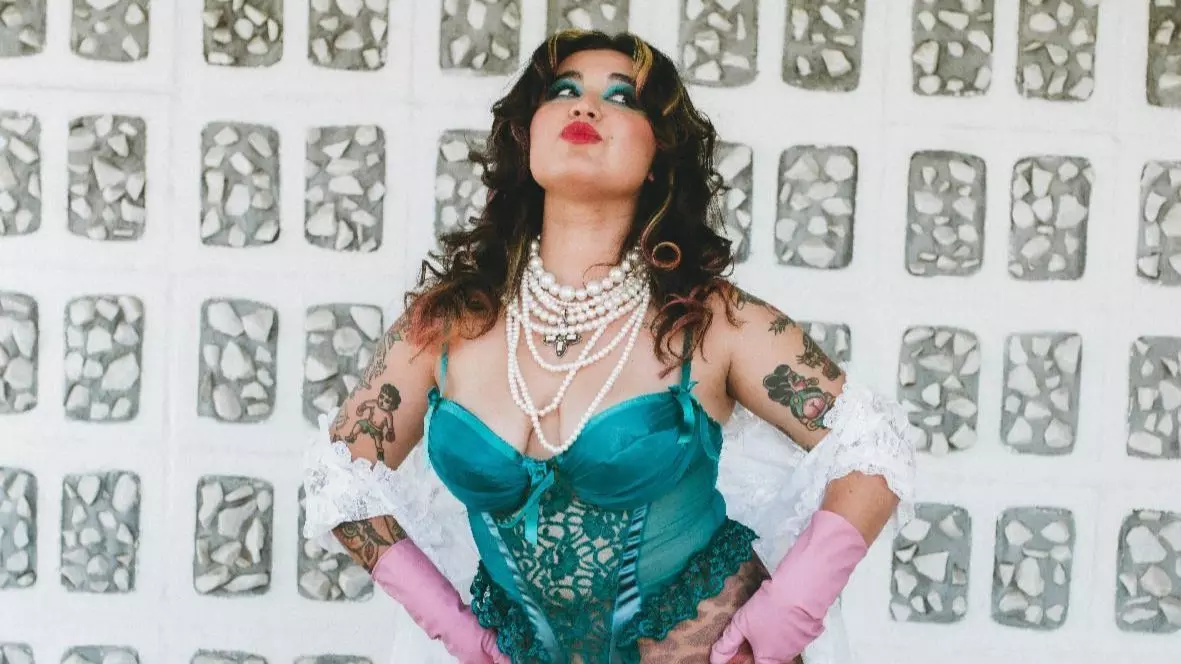
On New Album 'Big Ideas,' Remi Wolf Delivers Musical Poetry In Motion

Meet Derrick Hodge, The Composer Orchestrating Hip-Hop's Symphony

Behind Ryan Tedder's Hits: Stories From The Studio With OneRepublic, Beyoncé, Taylor Swift & More
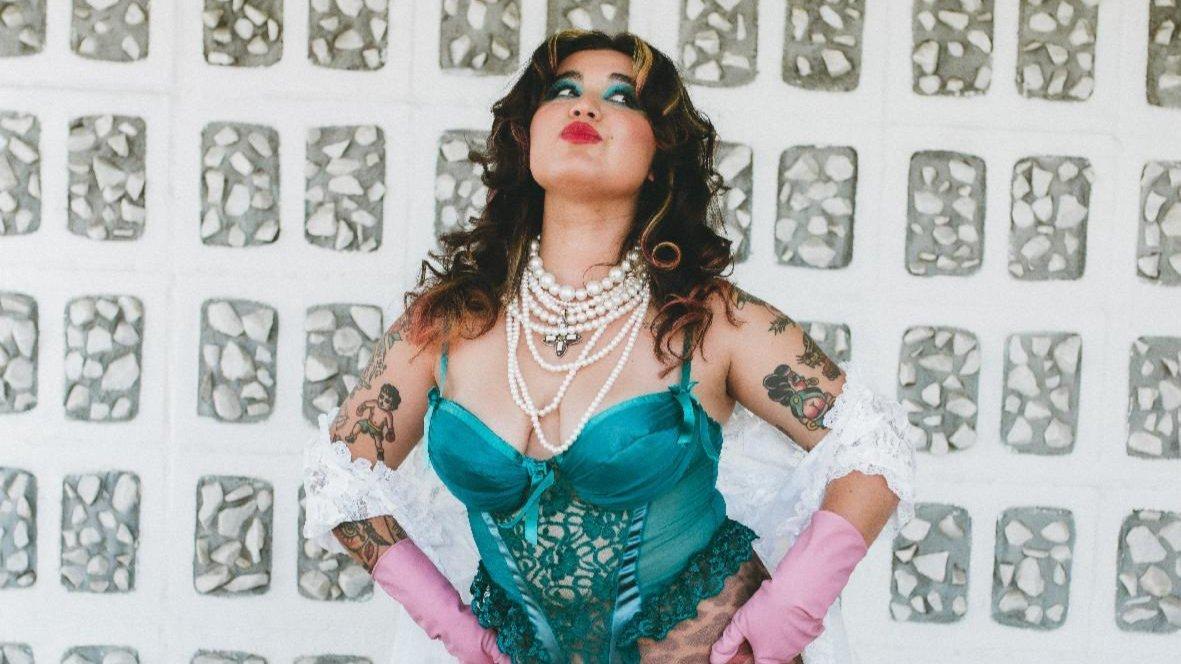
Photo: Ragan Henderson
interview
On New Album 'Big Ideas,' Remi Wolf Delivers Musical Poetry In Motion
Alt-pop favorite Remi Wolf took inventory of her psychological state while on "back-to-back-to-back" tours, and the result is a winning second album: 'Big Ideas.'
How can you write a song, when you have nothing to sing about? One trusty well to return to is life on the road; the musical canon is filled with odes to whizzing highway dividers, beds in strange places and, on occasion, a deteriorating home life.
The buzzy and prolific singer/songwriter Remi Wolf just folded these experiences into Big Ideas — her second full-length album, and one born of perpetual travel, transit and transition. (And, it should be said: her Carmen Sandiego traversals led her to NYC’s 2024 GRAMMY U Conference.)
"Well into my 20s, it was like a second puberty, because essentially, I was reborn as this touring musician," the thoughtful and loquacious indie-popper tells GRAMMY.com, over Zoom from her rehearsal space. (Even then, she's in motion, ducking from room to room to evade clamorous comings and goings.)
She evokes her breakout 2021 debut album: "I'd never toured like that before. My whole entire life felt so new after Juno was released."
This led to a white-hot writing streak. Big Ideas' highlights, like advance singles "Toro" and "Alone in Miami," directly address change and upheaval. Goes the former: "Dancing around and spilling wine/ You look good in my hotel robe." Goes the latter: "Met up with Maine, bought cocaine/ Clothes in the lobby waiting for me."
"There's no frills in that s—," Wolf says. "They're quite literally about real life." Read on for a full interview with Wolf about Big Ideas — a locus of that life, in all its nuances and dimensions.
This interview has been edited for clarity.
I love how funky and rhythmic 'Big Ideas' is. Which rhythms from the musical canon got you going? Are you a Purdie head? A Dan head?
Oh, all of the above. I love a Purdie shuffle. The Purdie shuffle is a pretty legendary groove. I'm a huge fan of Steely Dan. I went to music college; I feel like as a music school student, you kind of have to love Steely Dan. Well, some of the kids choose to hate them, but I chose to love them.
But yeah, I love a funky groove, a funky beat. I also like simple s—, but we love syncopation in this household.
What'd you grow up listening to on that front?
Honestly, not much. I feel like as a young kid, I would just listen to what my parents were listening to, and my dad listened to a lot of '80s classic rock, and my mom really liked Prince.
And then, also, my first album I ever owned was Speak Now by Lindsay Lohan, which is a completely different direction, and I was about eight when I got that album.
I didn't know she made music.
She had a music career. It was brief, but it was mighty, truly. She had all the best songwriters in the industry at the time working on this album. So honestly, even though it wasn't the pinnacle of musicianship, the writing was really good. Great songs.
I just flashed back to Hilary Duff jewel cases in grade school.
Oh, yeah, that's another classic, but I was a little bit more alternative than that. Lindsay Lohan was kind of on more of a pop-punk, like emo front-facing type of songwriting and energy. A little bit more like Alanis Morissette vibes.
If I ever encounter a Lohan song in the wild, I'll remember your recommendation.
When I was a high schooler, that's kind of when I started really listening to a bunch of staff that wasn't playing in my house. And that's when I got into Stevie Wonder and the Beatles and Cake.
I ride for Cake. Great band.
I ride for Cake, too. Honestly, they're one of my favorite bands of all time. I don't know, I feel super similar to them sometimes. Their lyrics are so wacky and sad, kind of — and bizarre, but they're so funky, and the songs are just great, but they're weird.
Take the readers through the span of time between your first album, 'Juno,' up to this sophomore album. What seed was planted?
I released Juno at the end of 2021, and I guess the seed that was birthed after that was that I've essentially been on tour ever since.
This new album, Big Ideas, is kind of the product of: I would go out on tour and come home for a week at a time, because I was on back-to-back-to-back tours. I went on 10 tours in one year; I was only home for about six weeks of all of 2022. And then, going into 2023, I kept touring, and kept doing the same thing.
Watch: GRAMMY Museum Spotlight: Remi Wolf
This album is a collection of all these moments and memories, and getting really focused, short amounts of time with me getting home and kind of exploding songwriting-wise — then, going back on tour and building up s— to talk about, and then exploding once again.
There were about five concentrated week-and-a-half to two-week-long periods of writing that became this album.
Do you get a charge out of touring? I couldn't imagine doing it again.
Yeah. I think that there is an adrenaline that I like about it. I like traveling. I like seeing different cities, even if it's for a couple hours. I really like that.
I like the communal aspect of it. I like getting really close to people and having a routine, to be honest. It's the most routine time of my life. Other than that, when I'm home, I'm just all over the place and doing a bunch of s—, which also has its perks.
But I don't know, there's something about waking up and doing the same thing every day that kind of is nice for me. And it's cool to be able to just focus on one thing, getting to the next city and playing the show and making people happy.
What about your life disappearing temporarily? Leaving a partner, your houseplants…
No, that's really difficult. I luckily don't have a partner right now, but I think that tour is really capable of ruining a lot of relationships, unless you've got a really strong one where they understand the lifestyle and everything. But I've had many houseplants die. It's actually really sad.
Your life just kind of is on pause. It's like a time machine, or a time capsule. Especially living in L.A. where the weather's the same every single day, you come home, and it's exactly the same as when you left the city.
Once the emotional and conceptual pieces were on the floor, how did you assemble 'Big Ideas?'
There are so many iterations of what it could have been. Because like I said, I had five two-week long sections of writing a f— ton of songs. And I'm not kidding, I wrote full albums within those weeks. I would be hunkered.
I had one week in L.A. where it was five days, and we wrote 10 songs. And then I had another week in L.A. We wrote seven songs. And I had another week in New York, and we wrote nine songs. And then another week in New York, and we wrote 12 songs. And then another week finally back in L.A., and we wrote four songs that time.
But essentially, I was kind of just doing what felt right. Until I felt like we had an entire album that was cohesive but expansive in its palette, I kept writing. And then finally, at a certain point, I was like, OK, I feel like we have the record.
But there were moments where I was like, oh, I just wrote an album. I don't have to do anything else. And then a month would go by and I'd be like, I need to do more.
In terms of choosing the songs, I think I was drawn to the songs that felt the most real to me — that continued to feel the most exciting and real to me.
Define "real" in this context.
That is a very difficult question to answer, and I think it is such a gut thing. It's beyond language. I don't know how to describe that. I don't know. If I feel invested. There are certain songs that you write and you like them, but you don't have that same feeling of investment in them.
Does this really need to be heard? Does anybody need this?
Yeah. Or: Do I need this? Honestly, it's so inexplicable.
Do you ever try to work the songwriting muscle of making something specific, universal? Is that part of your calculus?
Typically, it's not, but there's one song that I tried to do it on very intentionally: "Soup."
[I had] the intention of making it a song that was built for an arena in terms of the sonics and the expansiveness of the drums and the four-on-the-floor. In my head, I was like, OK, I want this song to play, and then you see the arena with the people pumping their fists and feet.
I think I'd recently seen Coldplay at Wembley Stadium, and I was like, Holy s—, this is so wild. Their stuff is so arena, stadium-bound. I was inspired by essentially the four-on-the-floor feel — hearing the reverb in the rafters of an arena like that.
Going into writing that song, I was like, this is the song where it would make sense for me to be blunt and universal with my lyrics. And I think it was a cool experiment and honestly quite vulnerable for me, because I think sometimes I shy away from that type of lyric writing, whether it be out of just wanting to be a little bit more artsy.
Sometimes I think it's fear-based, in the sense of: I want to hide, I want to be able to be the only one to really know what I'm talking about sometimes. And I think with "Soup," I kind of just let it fly and let that universality shine through a little bit more.
You don't need to know what songs mean all the time. You mentioned the Beatles: John sang, "Yellow matter custard, dripping from a dead dog's eye."
Yeah. It's syllables, and imagery. This s— can be anything you want to be, and I always try to remember that.
What's coming up in your musical life?
I'm going on tour in the fall; today is our first day of rehearsals. We're starting to put together a big show. More travel, more motion. I never stop moving, essentially. Hopefully I'll be writing more soon.
Explore More Alternative & Indie Music
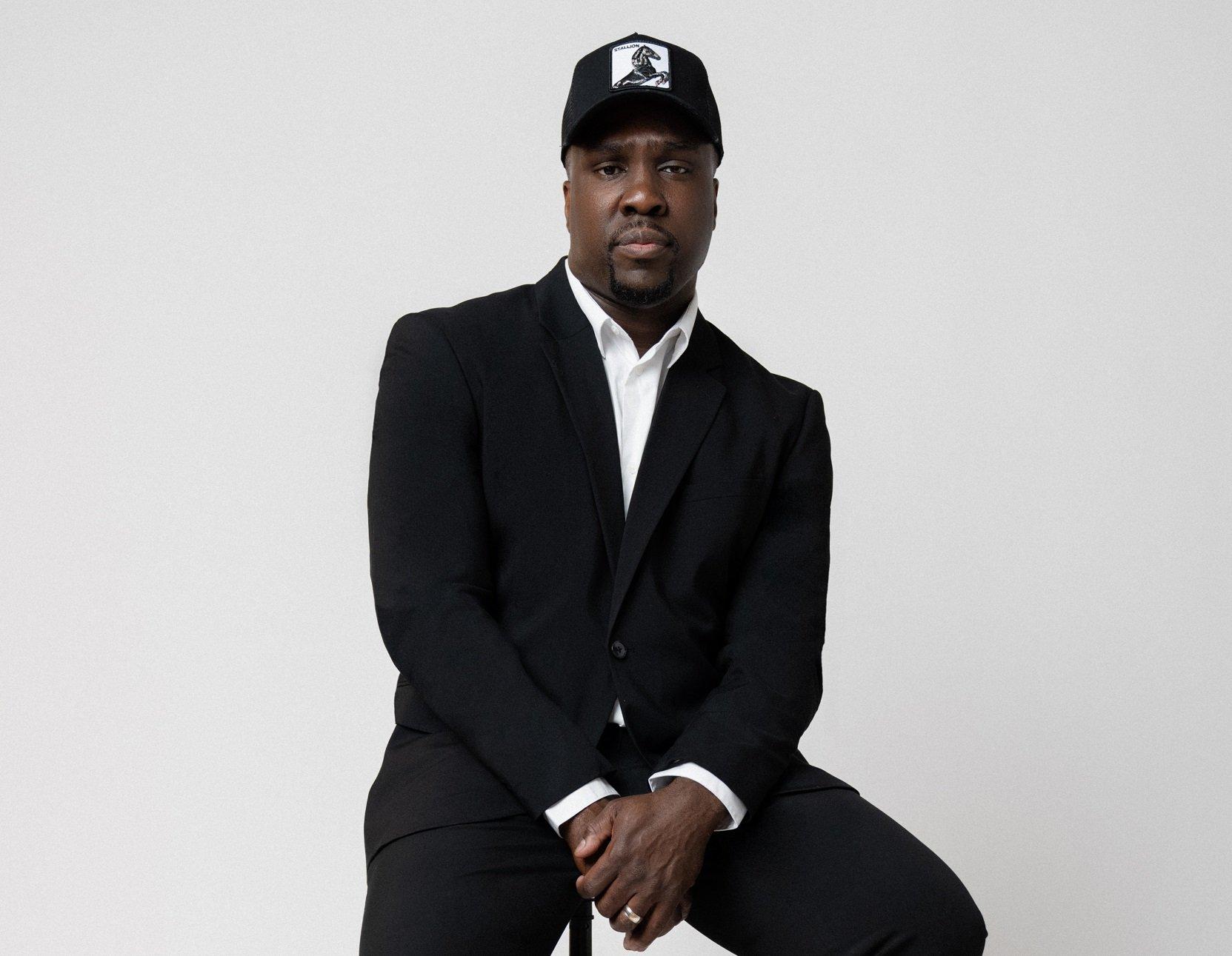
Photo: Oye Diran
interview
Meet Derrick Hodge, The Composer Orchestrating Hip-Hop's Symphony
From Nas' 'Illmatic' to modern hip-hop symphonies, Derrick Hodge seamlessly bridges the worlds of classical and hip-hop music, bringing orchestral elegance to iconic rap anthems.
Over the last 50 years, hip-hop culture has shown it can catalyze trends in fashion and music across numerous styles and genres, from streetwear to classical music. On June 30, Nas took his place at Red Rocks Amphitheater in a full tuxedo, blending the worlds of hip-hop and Black Tie once again, with the help of Derrick Hodge.
On this warm summer eve in Morrison, Colorado, Nas performed his opus, Illmatic, with Hodge conducting the Colorado Symphony Orchestra. The show marked a belated 30-year celebration of the album, originally released on April 19, 1994.
As Nas delivered his icy rhymes on classics like "N.Y. State of Mind," "Memory Lane (Sittin' in da Park)," and "Halftime," the orchestra held down the beat with a wave of Hodge's baton. The winds, strings, and percussion seamlessly transitioned from underscoring Nas's lyrics with sweeping harmonic layers to leading melodic orchestral flourishes and interludes. For the album's final track, "Ain't Hard to Tell," the orchestra expanded on Michael Jackson's "Human Nature," expertly sampled originally by producer Large Professor.
Derrick Hodge is a pivotal figure in modern music. His career spans writing and performing the famous bassline on Common's "Be," composing for Spike Lee's HBO documentary "When the Levees Broke: A Requiem in Four Acts," and his own solo career that includes his latest experimental jazz album, COLOR OF NOIZE. Hodge also made history by bringing hip-hop to the Kennedy Center with orchestra accompaniments for Illmatic to celebrate the album's 20th anniversary in 2014.
"That was the first time hip-hop was accepted in those walls," Hodge says sitting backstage at Red Rocks. It was also the first time Hodge composed orchestral accompaniments to a hip-hop album.
Since then, Hodge has composed symphonic works for other rappers including Jeezy and Common, and is set to deliver a symphonic rendition of Anderson .Paak's 2016 album, Malibu, at the Hollywood Bowl in September.
Hodge's passion for orchestral composition began when he was very young. He played upright bass by age seven and continued to practice classical composition in his spare moments while touring as a bassist with Terence Blanchard and Robert Glasper. On planes. In dressing rooms. In the van to and from the gig.
"It started as a dream. I didn't know how it was going to be realized. My only way to pursue that dream was just to do it without an opportunity in sight," Hodge says. "Who would've known that all that time people were watching? Friends were watching and word-of-mouth."
His dedication and word-of-mouth reputation eventually led Nas to entrust him with the orchestral arrangements for Illmatic. He asked Hodge and another arranger, Tim Davies, to write for the performance at the Kennedy Center.
"[Nas] didn't know much about me at all," Hodge says. "For him to trust how I was going to paint that story for an album that is very important to him and important to the culture, I have not taken that for granted."
Read more: How 'Illmatic' Defined East Coast Rap: Nas’ Landmark Debut Turns 30
Those parts Hodge wrote for the Kennedy Center are the same parts he conducted at Red Rocks. Over a decade later, he channels the same drive and hunger he had when he was practicing his compositions between gigs. "I hope that I never let go of that. I feel like these opportunities keep coming because I'm approaching each one with that conviction. Like this could be my last."
Before this latest performance, GRAMMY.com spoke with Hodge about bridging the worlds of classical and hip-hop, influencing the next generation of classical musicians, and how his experience as a bassist helps him lead an orchestra.
Throughout history, orchestral music has been celebrated by the highest echelons of society, whereas hip-hop has often been shunned by that echelon. What is it like for you to bring those two worlds together?
I love it. I've embraced the opportunity since day one. I was a young man showing up with Timberlands on and cornrows in my hair, and I knew the tendency to act and move in a certain perception was there. I knew then I have to represent hope in everything I do. I choose to this day to walk with a certain pair of blinders on because I feel like it's necessary. Because of that I never worry about how the classical world perceives me.
Oftentimes I'll stand before them and I know there may be questions but the love I show them, what I demand of them, and how I show appreciation when they take the music seriously…almost every situation has led to lifelong friendships.
I believe that's been part of my purpose. It's not even been to change minds or change perceptions. In serving the moment, even when people have preconceptions, they're in front of me playing music I wrote. How do I serve them best? How do I bring out the best in them just like I'm trying to bring out the best in the storyline of a hip-hop artist that may not relate to their story at all? The answer is just to be selfless. That's eliminated the distraction of trying to convince minds.
With that unifying principle, would you consider conducting the orchestra the same thing as playing bass with Robert Glasper?
The way I try to be selfless and serve the moment, it's no different. Maybe the skillset that's required. For example, conducting or working within a framework of composed music requires a certain way of making sure everybody's on the same page so we can get through these things on time and keep going. But I serve that moment no differently than when myself and Robert Glasper, Chris Dave, Casey Benjamin RIP, are creating a song in the moment.
I actually don't even think about how one thing is affecting the other. I will say the beauty of the bass and the bassists that have influenced me — from Ron Carter to the great Marcus Miller, Victor Wooten — is the way they can stand out while never abandoning the emotion of the moment. Remembering what is perceived as the role of the bass and how it glues things in a unique way. Harmonically and rhythmically. Being aware of the responsibility of being aware of everything.
I think that's one thing that's carried over to orchestrating and thinking about balances and how to convey emotion. I think some things are innate with bassists. We're always navigating through harmony and having a conversation through a lens of placement with drums. Placement with the diction if they're singers or rappers. There are a lot of decisions bass players are making in the moment that we don't even think about. It's just secondhand. But it's how are we serving what's necessary to make the conversation unified. I think that's one thing that's served me well in composition.
What's one song you're particularly excited to dive into for the Anderson .Paak arrangements?
So I'm intentionally not thinking in that way because we decided to treat it like a movie. Start to finish no matter what. With that in mind, I'm trying to approach it as if the whole thing is an arcing story because I didn't realize the succession of how he placed that record was really important to him.
**Hip-hop is often a very minimalist genre while an orchestra is frequently the opposite with dozens of instruments. How do you maintain that minimalist feel when writing orchestra parts for hip-hop albums like Illmatic?**
I'm so glad you asked that because that was the biggest overarching thing I had to deal with on the first one. With Nas. Because Illmatic, people love that as it is. Every little thing. It wasn't just the production. Nas's diction in between it, how he wrote it, how he told the story, and the pace he spoke through it. That's what made it. So the biggest thing is how do I honor that but also try to tell the story that honors the narrative of symphonic works? [The orchestra is] fully involved. How do I do things in a way where they are engaged without forcing them?
Illmatic was a part of my soundtrack. So I started with the song that meant the most to me at that time: "The World is Yours." That was the first piece I finished, and I emailed Pete Rock and asked "How is this feeling to you?" If the spirit of the song is speaking to him then I feel like this is something I can give to the people no matter how I feel about it. And he gave the thumbs up.
So instead of overly trying to prove a point within the flow of the lyrics, how do we pick those moments when the orchestra is exposed? Let them be fully exposed. Let them tell a story leading into that. Make what they do best marry well into what Nas and the spirit of hip-hop and hip-hop sampling do best. And then let there be a dance in between.
That first [Illmatic] show was a great experiment for me. I try to carve out moments whenever I can. Let me figure out what's a story that can combine this moment with this moment. That's become the beauty. Especially within the rap genre. To let something new that they're not familiar with lead into this story.
*Derrick Hodge conducts the Colorado Symphony Orchestra at Red Rocks* | Amanda Tipton
The orchestra is just as excited to play it as Nas is to have them behind him.
And that reflects my story. I try to dedicate more time to thinking about that, and that normally ends up reciprocated back in the way they're phrasing. In the way they're honoring the bones. In the way they're honoring the breaths that I wrote in for them. They start to honor that in a way because they know we're coming to try and have a conversation with these orchestras. That's one thing I try to make sure no matter what. It's a conversation and that goes back to the moment as well.
I've seen other composers put an orchestral touch on hip-hop in recent years. For example, Miguel Atwood-Ferguson wrote orchestral parts to celebrate Biggie's 50th birthday. Would you say integrating an orchestra into hip-hop is becoming more popular?
It has become popular, especially in terms of catching the eyes of a lot of the different symphonies that might not have opened up their doors to that as frequently in the past. These opportunities — I appreciate the love shown where my name is mentioned in terms of the inception of things. But I approach it with a lot of gratitude because others were doing it and were willing to honor the music the same. There are many that wish they had that opportunity so I try to represent them.
With these more modern applications of orchestral music, I feel like there will be an explosion of talent within the classical realm in the next few years. Kids will think it's cool to play classical again.
The possibility of that just brings joy to me. Not just because it's a spark, but hopefully the feeling in the music they relate to. Hopefully there is something in it, aside from seeing it done, that feels that it relates to their story. I have confidence if I'm true to myself, hopefully, each time in the music it's going to feel like it's something relevant to the people. The more I can help foster platforms where people are free to be themselves, and where they can honor the music—I hope that mentality becomes infectious.
More Rap News

5 Rising L.A. Rappers To Know: Jayson Cash, 310babii & More
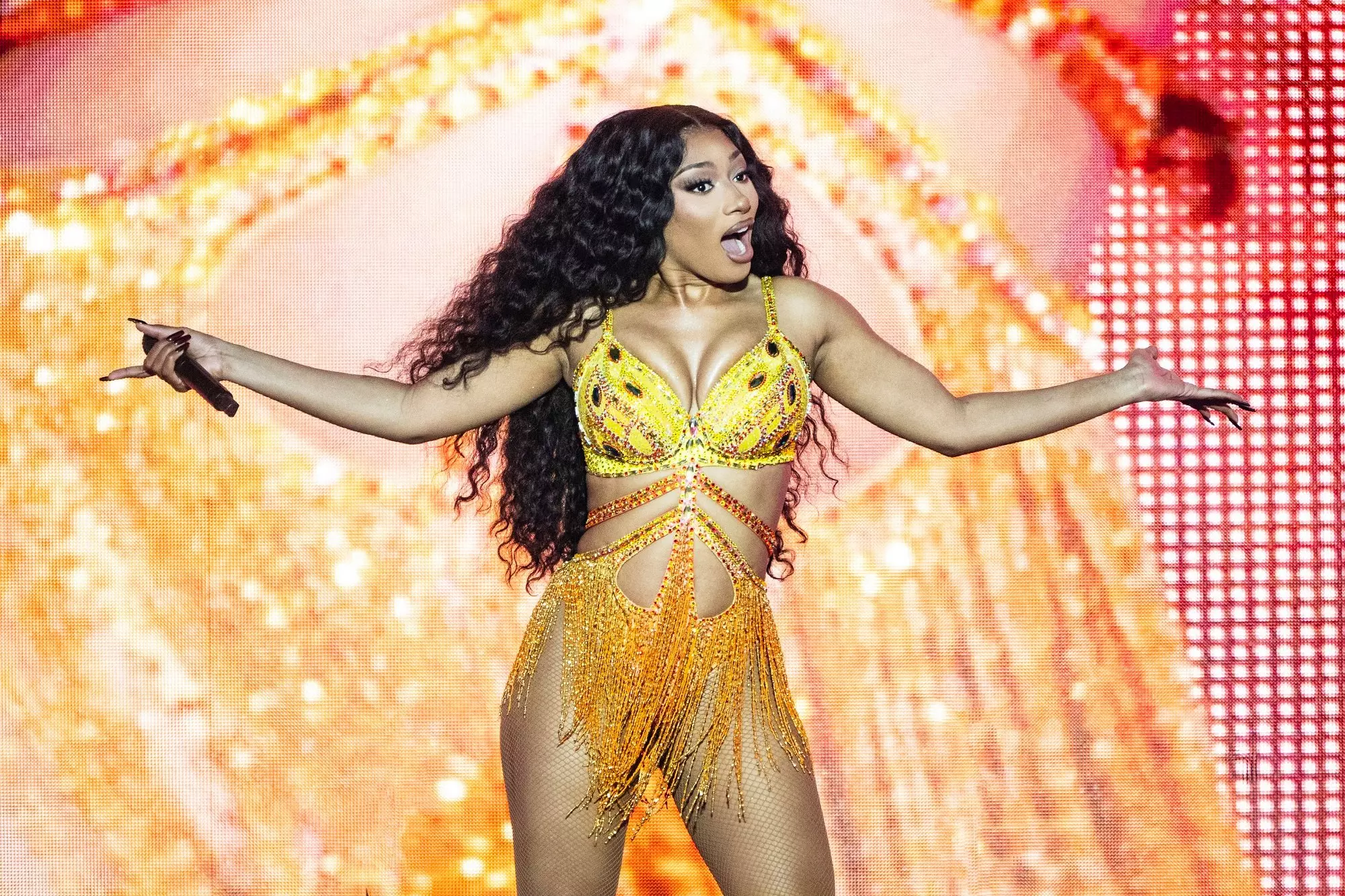
6 Takeaways From Megan Thee Stallion's 'Megan': Snakes, Shots & Self-Assurance
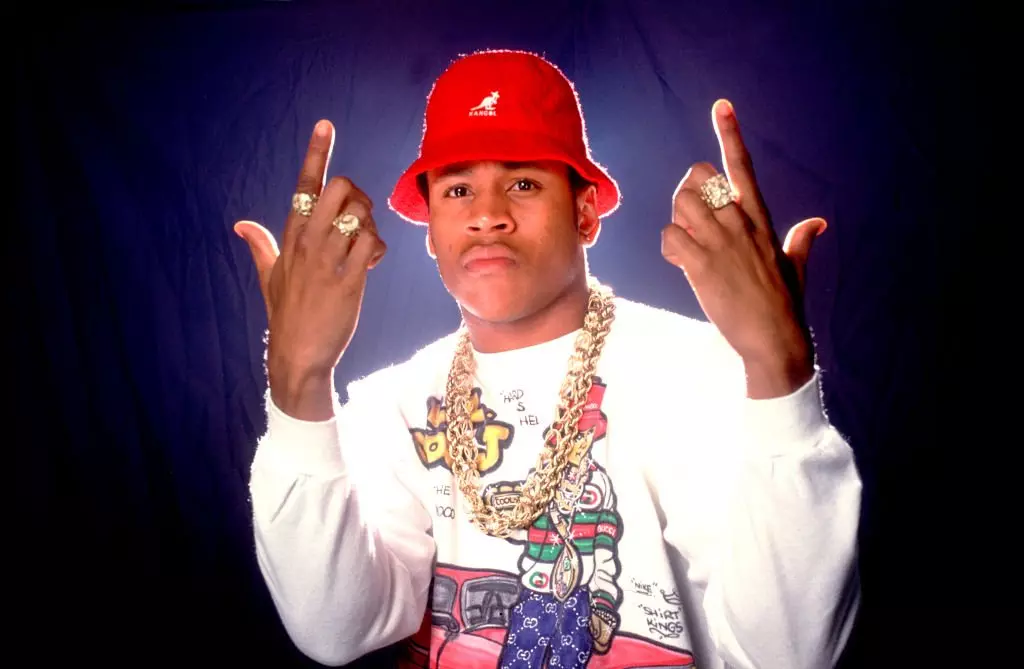
Celebrate 40 Years Of Def Jam With 15 Albums That Show Its Influence & Legacy
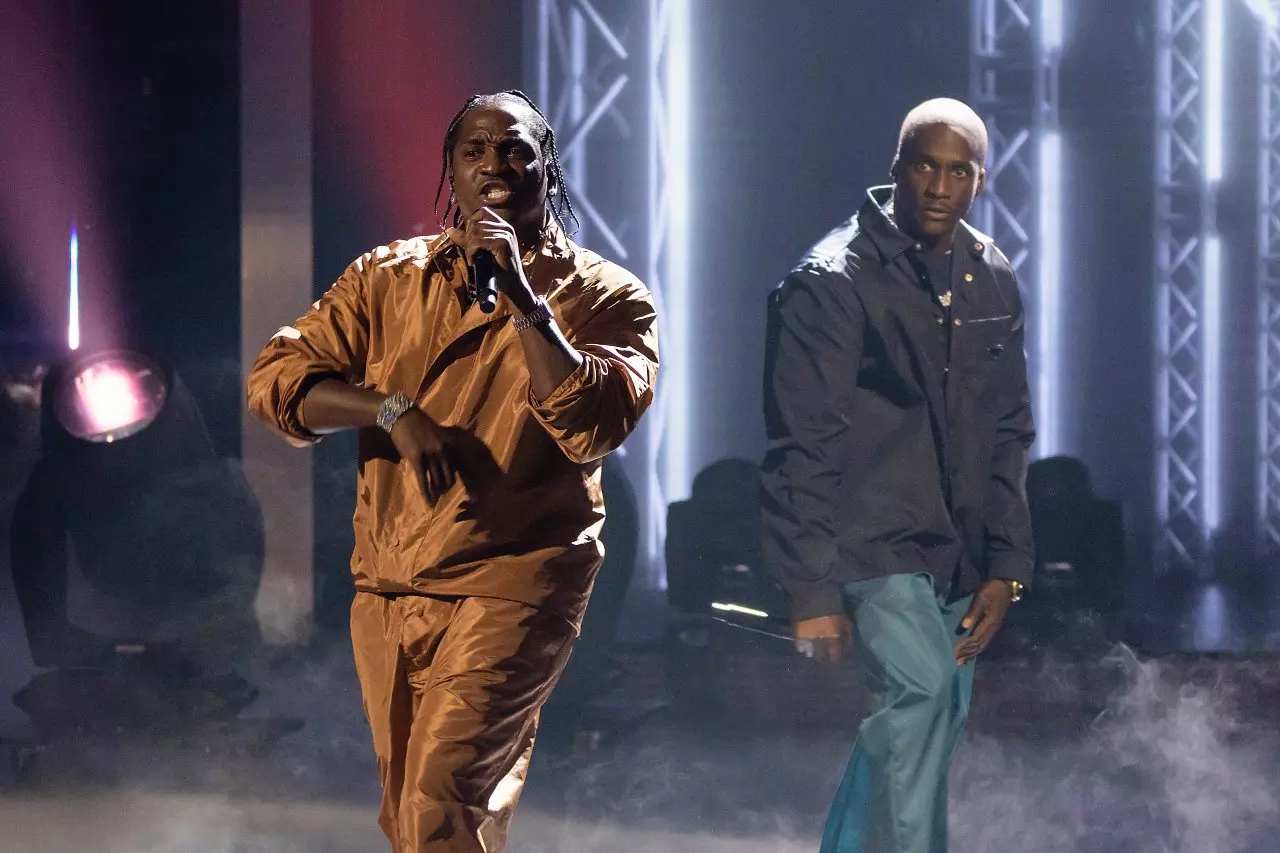
Everything We Know About Clipse's First Album In 15 Years: Pusha T And Malice Rise Again
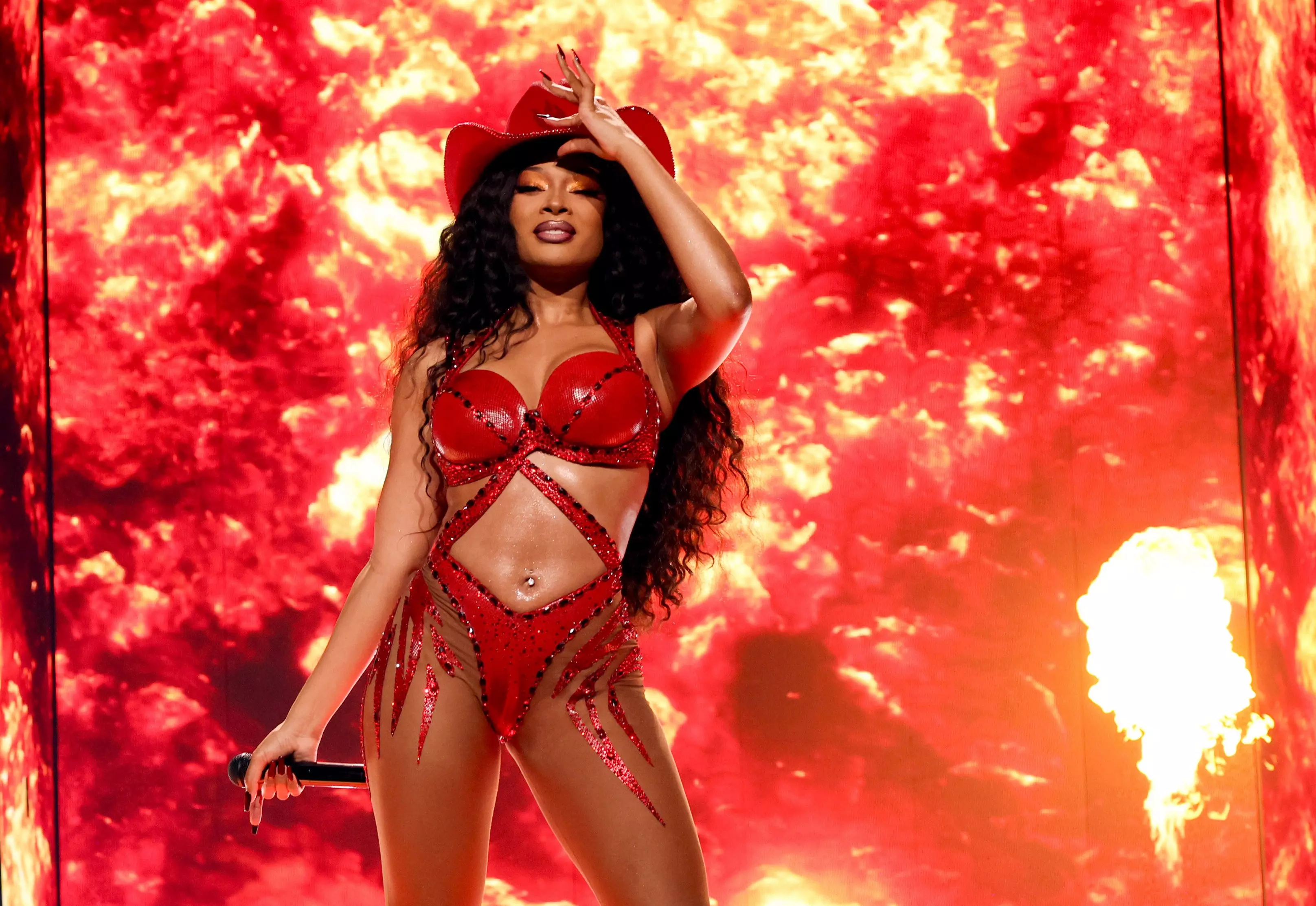
5 Iconic Moments From Megan Thee Stallion's Houston Hometown Shows


